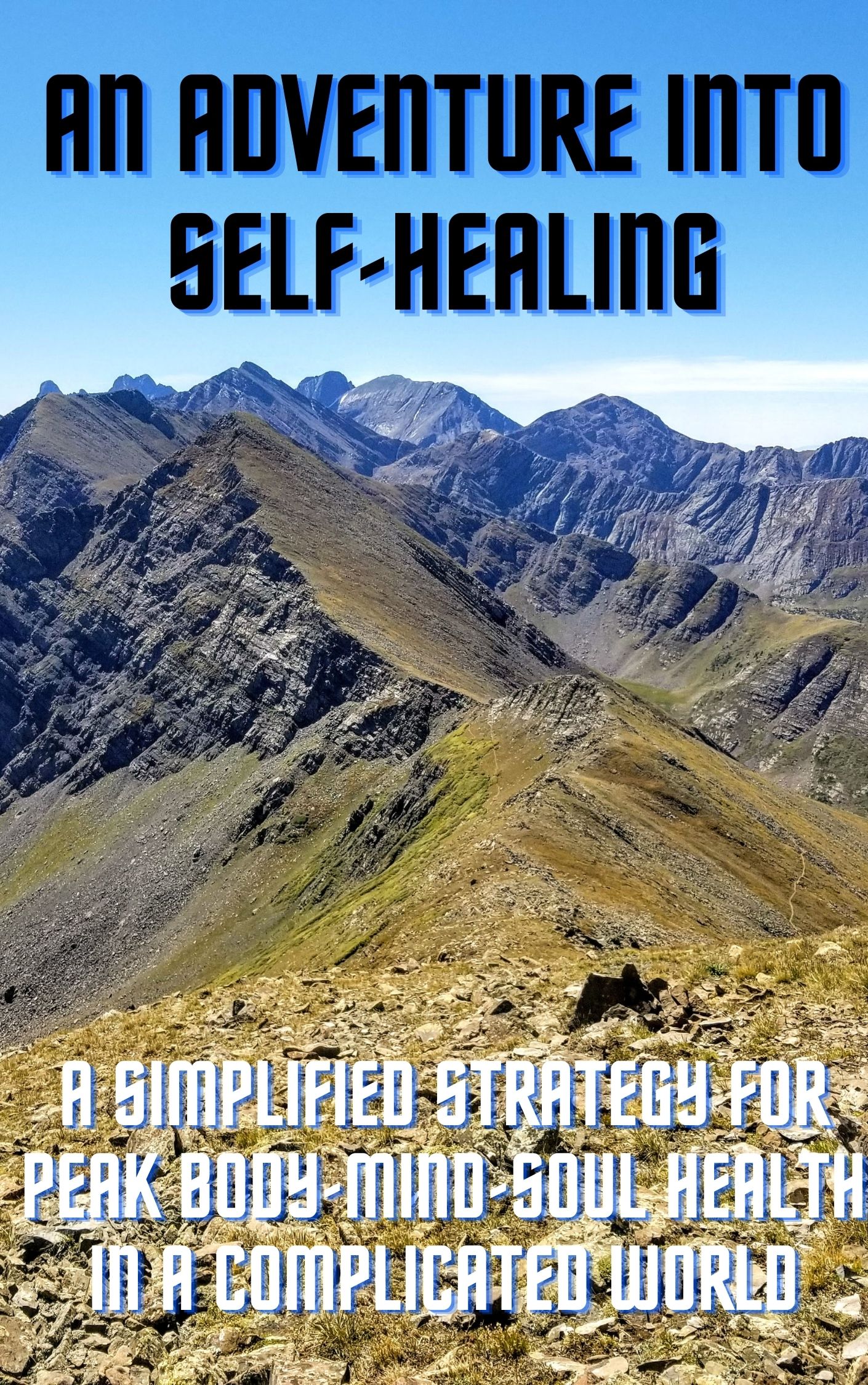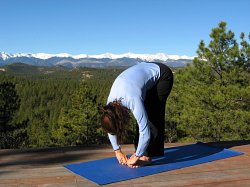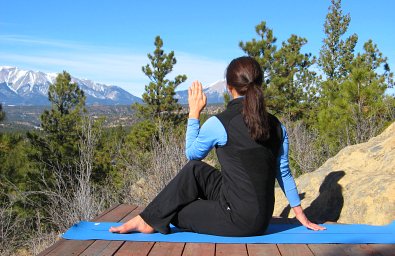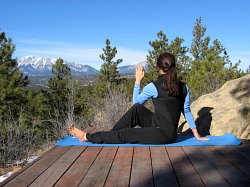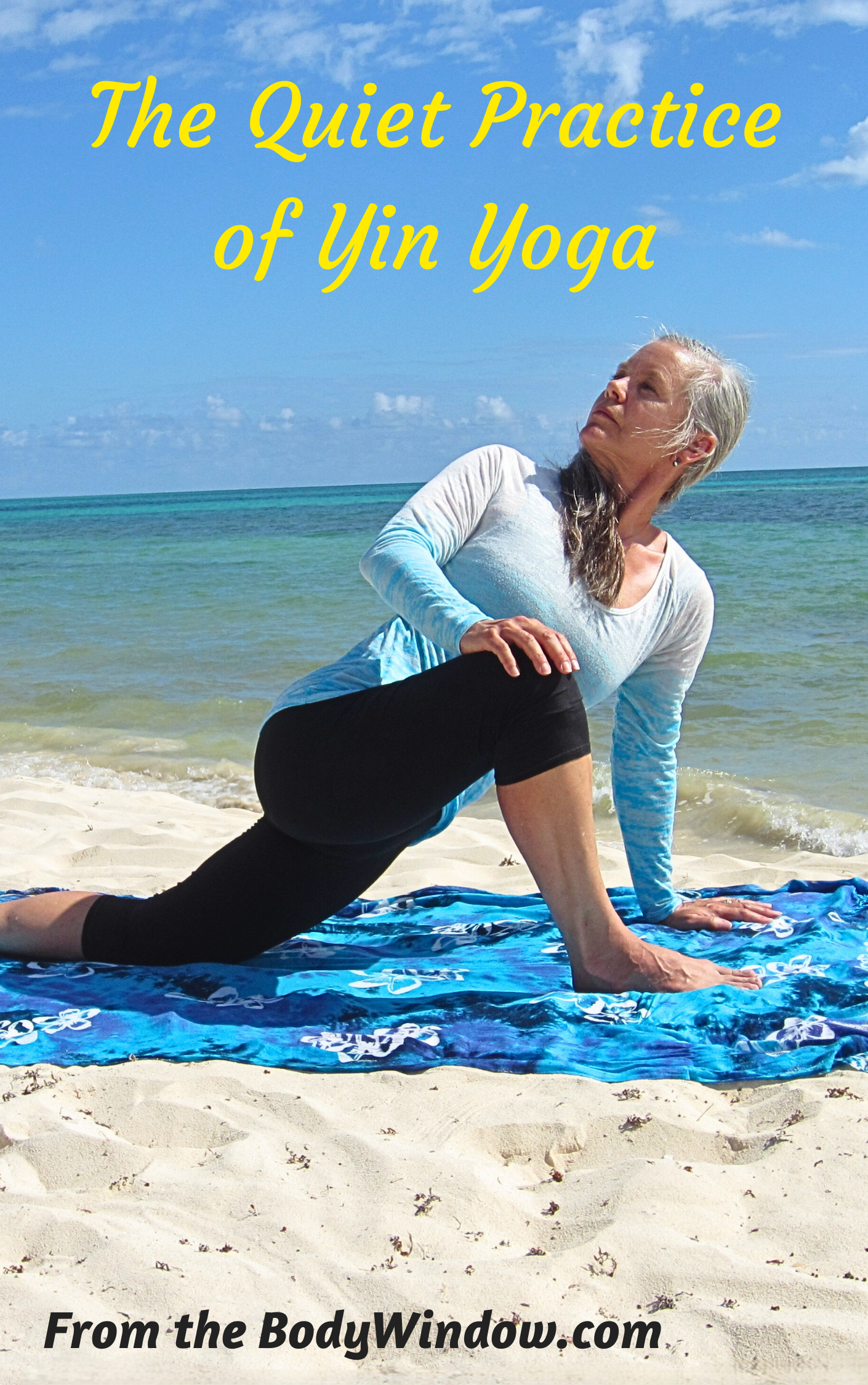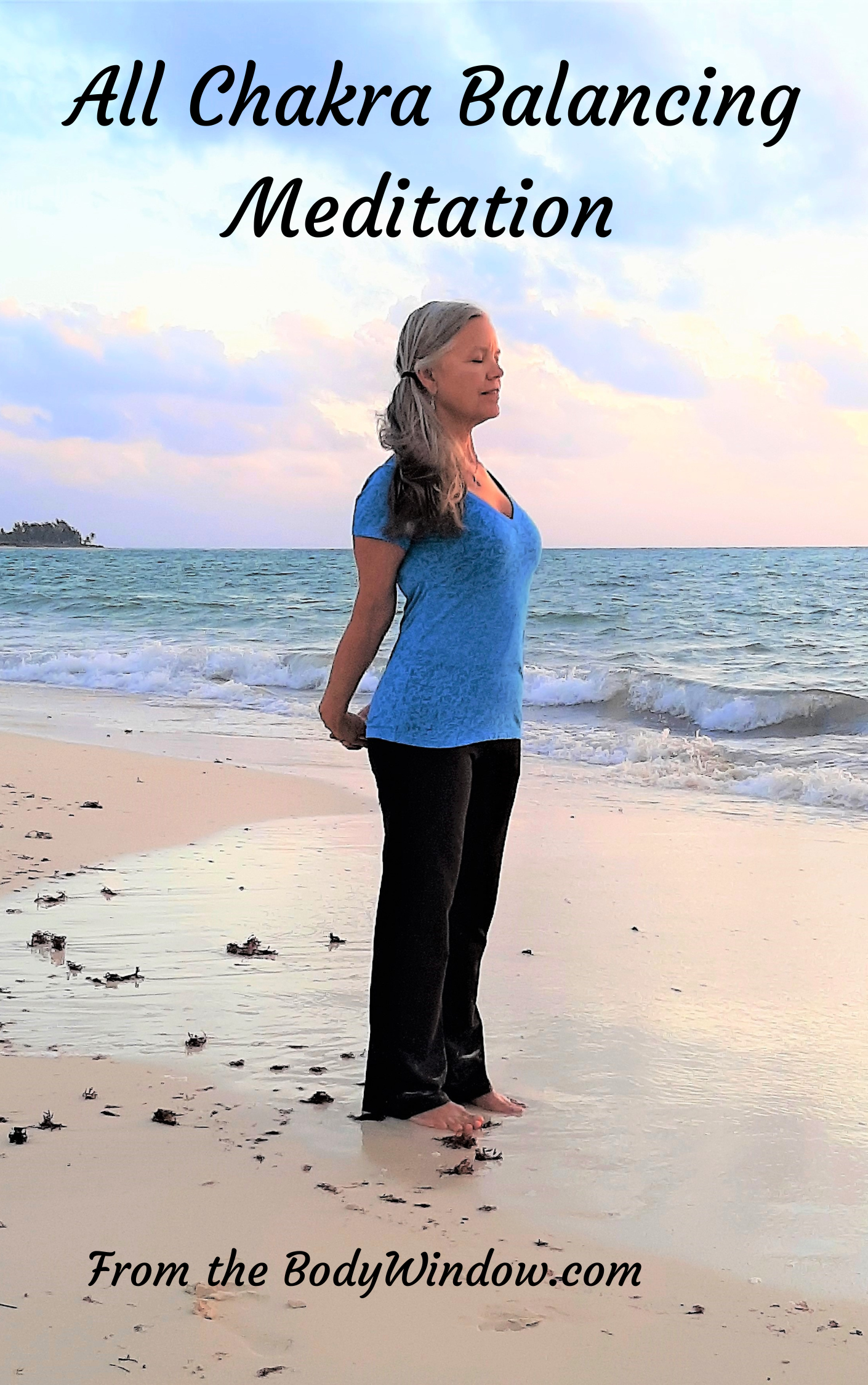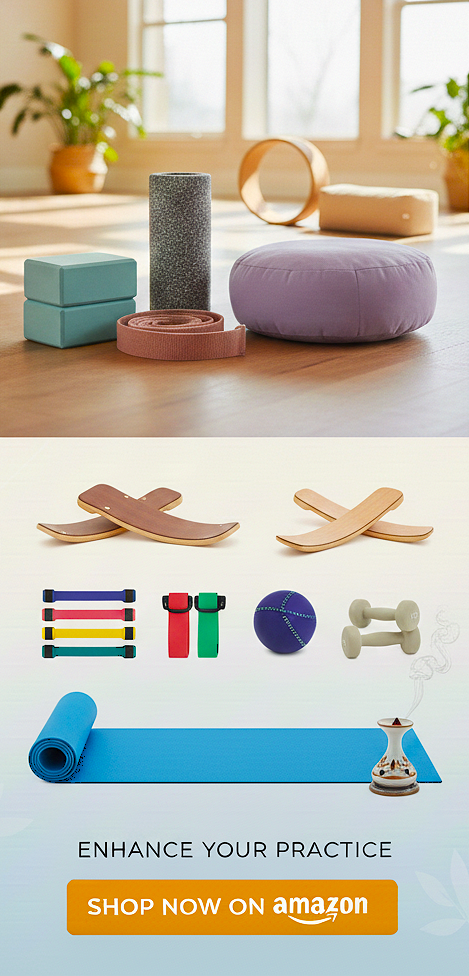Way ~ Through Your Body!
- Home
- Foam Rolling
- Foam Roller Exercises for the Lower Back
Foam Roller Exercises and Stretches for the Lower Back and Lumbar Spine
Perform foam roller exercises for your lower back and get back pain relief. The mind-body connection is a powerful force when it comes to lower back pain.
This article focuses on the metaphysical causes for the experience of physical pain. It is important for you to understand the body-mind connection in lower back pain in order for you to heal. My goal is to provide you with sufficient information on the muscles of the lower back to help you really dig deep into this area if it is problematic for you. ...
The body contains wisdom that if we fail to see, will haunt us. Our deepest secrets that we chose to hide from ourselves are hidden deeply within ourselves and our physical beings.
You should first consider reading my general article on Foam Rolling prior to reading this article. In the foam rolling article I lay the groundwork for all my foam roller exercise articles. In it I describe the body-mind-soul benefits of foam rolling. This is especially important to understand because the lower back is a very sensitive area, rife with body-mind-soul issues.
The Body Window's Self-Guided Healing Course is Now Reduced to only 19.95 USD!
Click here to learn more about how this healing course can change your life!
Also, my foam rolling article contains a comprehensive index to all my articles with instructions for foam roller exercises of every specific body area.
It is best if you have a general understanding of foam rolling and foam rollers before you start on foam roller exercises for your lower back. If you have issues with your upper back please see foam roller exercises for your upper back.
The lower back or lumbar area is perhaps the area that is most often injured and causes the human body more strife than any other body part. Few of us can say that we have never had a sore lower back or never had lower back pain at one time or another.
I have refrained from writing about the lower back, until now, because it is a great challenge to discuss. Never is a body part more affected by body-mind-soul issues than the lower back. More people have lower back pain than pain in any other body part.
The cause of lower back pain can be of muscular origin and due to something as simple as a slight pull or overstretching of the muscles or tendons of the lower back. Or, lower back pain can be very complex, involving bulging discs, compression of nerves, bone problems, inflammatory diseases or a combination(s) of all the above.
If you are being treated by a physician for lower back pain, please get his/her approval before you begin foam roller exercises for the lower back!
If you still don't have a foam roller, I recommend you purchase the full round, 36" x 6" high density style. They are the easiest to manage as a beginner, you can use this full size for the most different types of exercises, and it is what I show in all my videos. This is truly the only one you need!
You may also wish to purchase a yoga sticky mat to roll on, if you don't yet own one. It makes the rolling more comfortable if you don't have carpet where you are working out.
the function of the lower back muscles:
The lower back area consists of several muscles and muscle groups. These muscles are complex and intricate. I will only focus on the major ones, the Erector Spinae which actually run up and down the entire length of the spine, along each side of the spine and the Quadratus Lumborum that lies just underneath the Erector Spinae and slightly towards the side.
Just by looking at the back, you can see the Erector Spinae on each side of the spine. In order to find the Quadratus Lumborum, put your hand on your hips, and where your thumbs fall in the back, that is approximately where the quadratus muscles fall.
The Iliopsoas is also a muscle frequently involved in lower back pain. Please see my article on foam roller exercises for the iliopsoas for more information about it.
The function of the erector spinae is to extend the spine, flex it to one side or another at the waist, and finally, it rotates the body at the waist. It also provides support for the spine and back, as it runs along the entire length of the back.
The quadratus lumborum also flexes the spine laterally, and rotates the trunk at the waist. It stabilizes the pelvis and lumbar spine. If the Erector Spinae muscles become weak, the QL will often contract to assist them. This may lead to over-contraction and overuse of the quadratus lumborum muscles.
Prolonged sitting, with the resulting constant contraction of the hip and back muscles causes the spinal muscles to become weak. Possibly, the use of a lower back support in a chair contributes to this problem.
Constantly contracted muscles have reduced blood flow causing adhesions in the muscle and fascia. Low blood flow and adhesions may lead to back problems and possibly back spasms.
Since most of us sit at a computer most of the day, lower back pain and the search for back pain relief is a very common thing. The hip flexors may also be affected by sitting all day. This is why foam rolling is so important to stay healthy if you sit at work.
meditate on the meaning of the lower back in your life
The body metaphor for the lower back has traditionally been viewed as an area surrounding support, or lack of support. If you feel unsupported it can be in any way, emotionally, financially or physically.
In addition to support, the trunk is also associated with stability, flexibility and strength. The lower back and lumbar vertebrae allow for flexibility and movement in back bending (extension) and forward bending (flexing).
The lower back may represent support, stability, flexibility and strength or the lack of support, stability, flexibility or strength!
There are many body metaphors regarding the back. Witness the following: the 'straw that broke the camel’s back' (shows breakdown of support and weakness), or to 'never back down' (shows rigidity and inflexibility), or to 'put our back into it' (shows strength), compared to 'break our back' (shows weakness). And finally, the more positive, letting things just 'roll off our back!'
You may know many more metaphors that are used in the English language to symbolize the back and it’s functions in our lives. When you perform your foam roller exercises for the lower back, meditate on the meaning of this area for your body-mind-soul.
Foam rolling and lower back stretches can bring back pain relief if you proceed with caution and with love for your body. Develop intuition by learning to use your body as the tool.
create positive affirmation for your lower back
When you perform the following foam roller exercises, say positive affirmations like the ones below. Or create affirmations for you personally, that have meaning to you and your life.
- I am supported in all things and I have everything I need.
- I bend and flex with ease and comfort and am like the willow in the wind.
- God is my rock and my strength, and in all things supports me.
- My back is free of knots and stress and I am flexible and mobile.
- I am stable, strong and whole. I move with comfort through the tasks of life.
are foam roller exercises for the lower back dangerous?
As I began my research on foam rolling for the lumbar area, I found that most experts state that one should never foam roll the lower back. Their reasoning is that the lower back does not need to be mobilized more than it already is, that the problems in this area are due to over-mobilization of the lower back.
Over-mobilization of the lower back, according to them, is what causes lower back pain. Because back injuries are due to twisting motions while performing activities like lifting, pulling and reaching, this is what is meant by over-mobilization.
Keeping your lower back straight and stable is difficult to do while performing activities of daily life. Twisting while lifting, pulling and reaching puts stress on the lower back. Add emotional issues from stress, lifestyle habits of prolonged sitting and constantly being in a hurry and the recipe for lumbar spine injury is enhanced.
Lower back pain is the result of improperly using the lower back during the activities of daily life. The improper motions accumulate over time to cause chronic lower back pain and possibly back injuries. This is why lower back pain and injuries of the lower back are called repetitive motion injuries.
It is the build-up of improper motions of the spine over the years, until literally, you reach a point where just a small motion can be the ‘straw that broke the camel’s back.’
When it comes to the lumbar spine, one can look at the issue of over-mobilization as improper mobilization. If you listen to your body very carefully and keep your spine straight like a log, when you use the foam roller, you can avoid improper mobilization of the spine.
Keep your shoulders and hips in line with one another when you do your foam rolling of the lower back, and imaging a rod in your spine, keeping it straight, so you don't twist your lower back as you do your foam roller exercises. This is especially important if you already have a fragile lower back.
You must stop short of jabbing, stabbing or excruciating pain. I believe the foam roller exercises can be done safely on the lower back if you exercise your intuition to stop if the pain becomes too bad.
You absolutely must perform the foam roller exercises in a mindful fashion and never, ever push through more than moderate pain!
No rapid, sawing back and forth motions. You must perform these exercises at your own risk. I believe that they can be a great back pain exercise for back pain relief, if combined with lower back stretches, but they must be done carefully.
Don’t worry if when you roll the lumbar spine (and the upper back as well) your back cracks. Usually this feels really good and brings about pleasure. If it doesn’t feel good, simply don’t roll the spine!
the importance of starting slowly
Since the lower back is a highly sensitive and emotional area, you might want to start out gently and slowly.
Foam roller exercises utilize the very effective technique for muscle health that is called self-myofascial release. This release is a technique for keeping your muscles loose, lengthened and free of congestion and stress knots – otherwise known as ‘hot spots’ or muscle knots or fascia adhesions.
Self myofascial release is a great thing for relieving the soreness and tightness in the muscles. If you are looking for back pain relief, the foam roller may be just your thing. Just start slowly!
If you should experience shooting, stabbing or excruciating pain in your lower back during any movements, stop and see a healthcare professional immediately!
Rolling your stress areas in your muscles will provide the therapeutic effects of balance and elongation. If the self-myofascial release is accomplished, you can have back pain relief. It is a simple form of self-massage that you can do anytime, anywhere, without having to rely on massage therapists. Athletes swear by the foam roller to help in injury recovery.
self-myofascial release and emotional release
The added benefit to the foam roller exercises is that when you use them meditatively, the release of the muscle tension will often trigger emotional release. This is because your attention is focusing on the sore area and you are sending energy and concentration to that area.
In order to heal the painful area, you must feel it first, fully and deeply so that you can release it! If you can feel your emotions instead of denying them, you will understand how your emotions affect your body. Stored emotions in your body will only bring you turmoil.
Roll the muscles slowly, focusing the pressure on the muscle knots. Remember, like I taught you in my foam rolling article, don't hold your breath, but keep the relaxation response alive by deeply breathing as you roll.
Really sink into the sore spots and don't forget to breathe as you patiently wait for the muscle to let go. Hold the pressure on the muscle until it releases.
If you experience more than mild pain while foam rolling, your natural tendency will be to hold your breath. If this happens, back up on the pressure until you can deeply breathe again.
Holding one's breath is an unconscious response to pain. If you continue to hold your breath, your muscle will tense up even more - this is the opposite effect that you wish to achieve.
The key ingredient for effective foam rolling in a body-mind-soul fashion is to deeply breathe so that your muscle is given permission to let go and release.
As you breathe deeply and do the foam roller exercise, tell your lower back muscles that it is OK to release. It is OK to give up control and relax into this very moment! You deeply breathe as you move into the pain, telling your muscles to relax and let go.
Your lower back will release as you send your breath to it and release the tension and constriction that you have held there for so long. If you focus your energy here, over time it will heal.
If you journal about your feelings and your body sensations while you do the process, you will heal even faster.
If you say your affirmations while you foam roll, as I suggest above, healing will accelerate as well. Over time, your newly learned relaxation response will carry over in your life.
foam roller exercise video for the lower back (lumbar spine)
The following video of the foam roller exercises is in two parts:
First I am giving you a written description of the exercise for all who must "see" things in writing. This is for those who function best with their left, more detail-oriented brains.
Second, is the video below, where I am showing the actual foam roller exercise movement. The video has no voice-over as you will notice. I am forcing you to use your right brain, the sensing, feeling part of your brain.
It is your right brain that perceives images and spatial relationships. The right brain is that side that you most often close down, in our left-brain-loving world that is detail-oriented and language-loving. Not hearing my voice will also make the movements more intuitive, as you focus on going inward, instead of listening to my voice.
- Position the foam roller in your mid-back between your shoulder blades and support yourself with your feet in front of you, hips raised up off the floor in a bridge position.
- Use your legs to push as you slowly roll down your back. You may cross your arms over your chest or any other comfortable position.
- Roll down the lower portion of the spine, stopping at the base of the spine.
- Roll up to the middle of the back and back down. Repeat as often as your heart desires, and go as fast or as slow as your intuition leads.
- For the erector spinae on each side of the spine, place the foam roller on the small of the lower back and shift your weight to the left side. Position yourself so the pressure of your weight is just to the left side of your spine. Remember to keep your spine straight, without twisting. Shift farther to the left to target the lateral part of the quadratus lumborum. Use your elbow to prop your weight as needed.
- Next, take your right hand and as you lift your left knee, grasp it under the knee.
- Go slowly as you roll in very small movements, up and down the muscle just to the side of the spine. Never twist, but keep your spine long and straight.
- To increase the pressure and stretch on the quadratus you may try to extend your leg as shown.
- You may vary the intensity of the pressure, if needed, by sinking deeper into your roller as you roll.
Here is another video where I use the yoga Cat and Cow sequence - formerly called the Cat and Dog. This sequence of movements will limber up your lower back as well as your upper back and help provide back pain relief.
You may follow up with lower back stretches, if back pain relief is your goal, through yoga stretches like the Standing Forward Bend. Do not lock out your knees in this pose and only go as low as is comfortable for you.
You can do the Seated Forward Bend pose and the Lateral Half Dragonfly to target your quadratus lumborum muscles. Go only as far as is comfortable for you. As you deep breathe, and your muscles relax, go a little farther.
Perhaps the most healing yoga pose of all, for the lower back is the Sphinx Pose (and the Seal Pose). Please click on the link to fully understand the action of this pose! This pose should be done in the Yin Yoga fashion in order to achieve the full therapeutic effects.
Any of the twisting at the waist poses will stretch the muscles of the lower back. Here are two. The Half Spinal Twist and the much easier Modified Half Spinal Twist. Don't do the twisting poses if you have more than mild discomfort of the lower back at rest.
You may hold these stretches as long as your heart desires. Don't forget to deeply breathe at all times. Only go as far as is mildly uncomfortable, then
breathe deeper and on the exhale sink a little lower!
A comprehensive program of lower back pain exercises that includes foam roller exercises and yoga stretches will help you in your journey to healing your lower back pain.
May you always lovingly care for your body and your lower back when you do these foam roller exercises and stretches. May you reconnect with your body and begin your own personal journey towards body-mind-soul health!
foam roller exercises for the lower body and lower back:
- Hip Muscles that Focus on Opening Your Hip.
- Iliopsoas (Hip Flexors).
- Piriformis and Gluteus Muscles (Hip Muscles).
- Iliotibial Band (IT Band) and Tensor Fasciae Latae (TFL) Muscles (Side of the Thigh).
- Adductor Muscles (Muscles of the Inner Thigh and Groin)
- Hamstring Muscles and Quadriceps Muscles (Thigh Muscles).
- Gastrocnemius Muscles (Calves) and Anterior Tibialis Muscles (Shins).
- Myofascial Release ~ The Self-Emptying of Body-Mind-Soul Kenosis
- Using Your Roller for Developing Intuition.
Can't find what you're looking for? Search this website:
Support This Website and Its Mission
Thank you so much for considering a donation to help support this website. I appreciate your thank-you for access to so much free information. If you feel you have been blessed by this website, thank-you for your donation! (Please note that you will be directed to PilgrimageTraveler.com's Paypal page when you click the donate button. This is another website of mine, a subsidiary and I have consolidated two accounts!)
© Copyright 2009-, by Elle Bieling, BodyWindow.com
All Rights Reserved
We also hereby confirm, as stated in our Privacy Policy, that we do not sell personal information of any kind.
Information on this website is not intended for medical advice. See your health care provider for any health concerns. By using this website and/or practicing any yoga postures, foam rolling exercises or other physical movements contained herein, you are agreeing that you are in good health, cleared by your healthcare professional to participate in physical activities and you release The Body Window from any liability involved in the practice.
